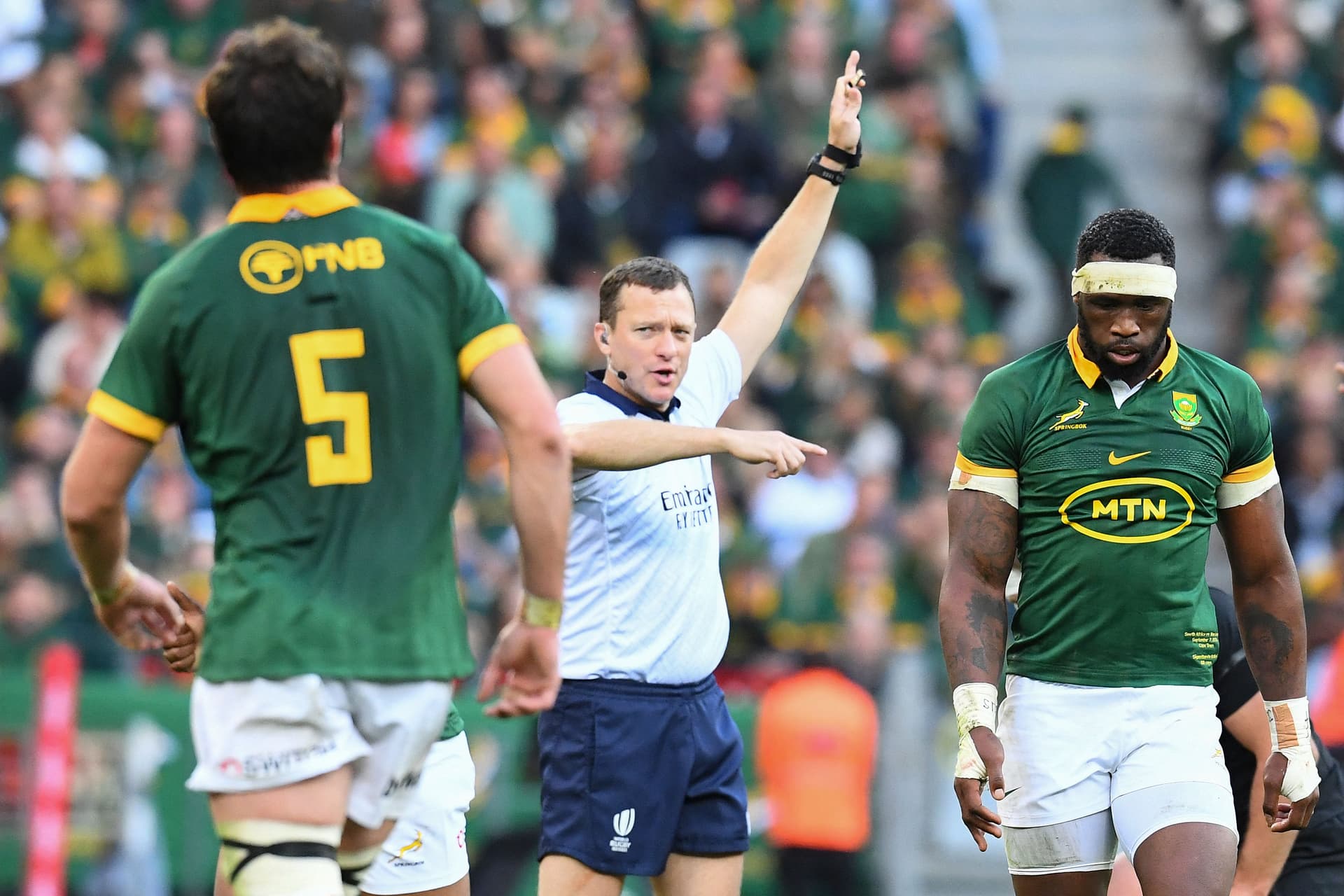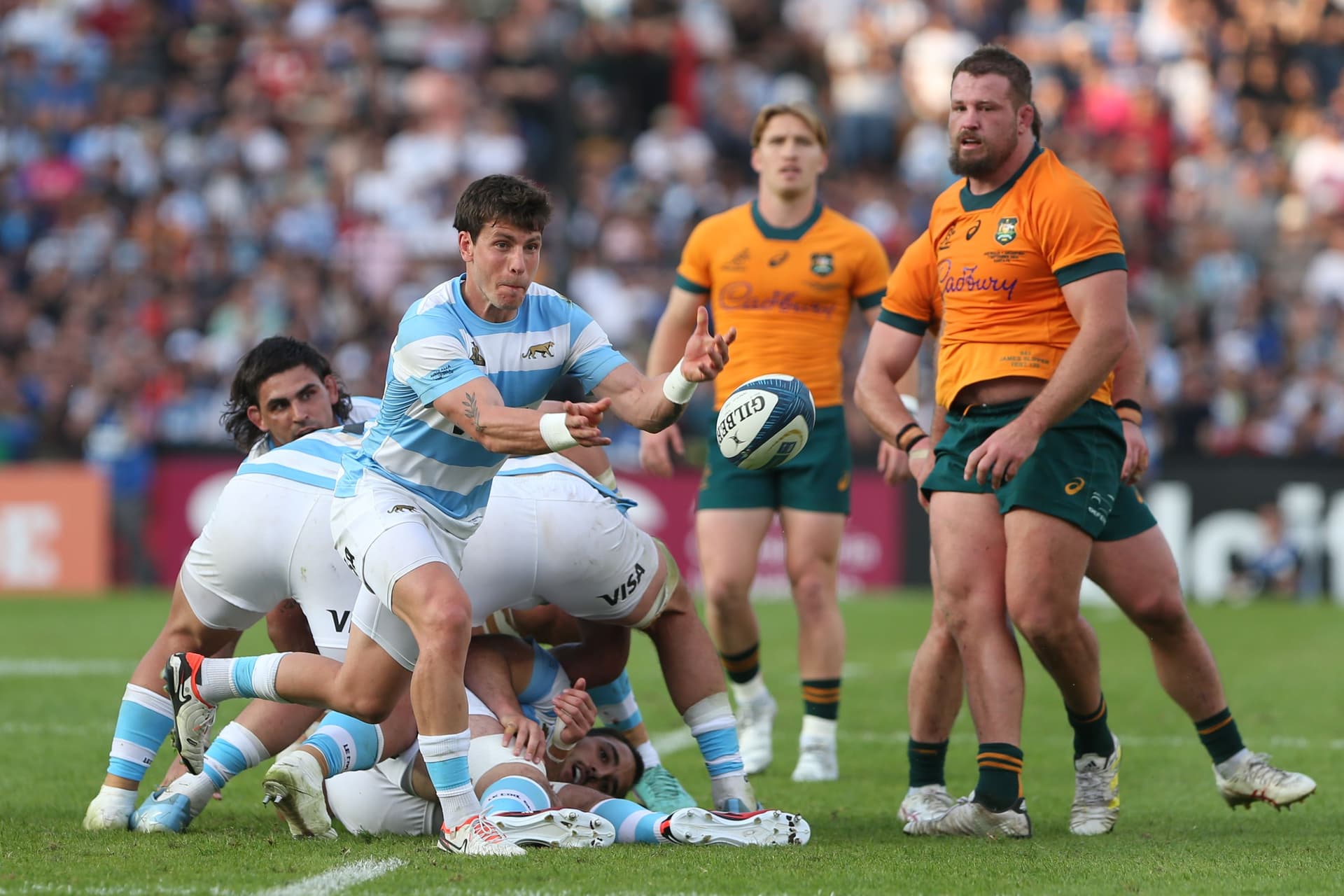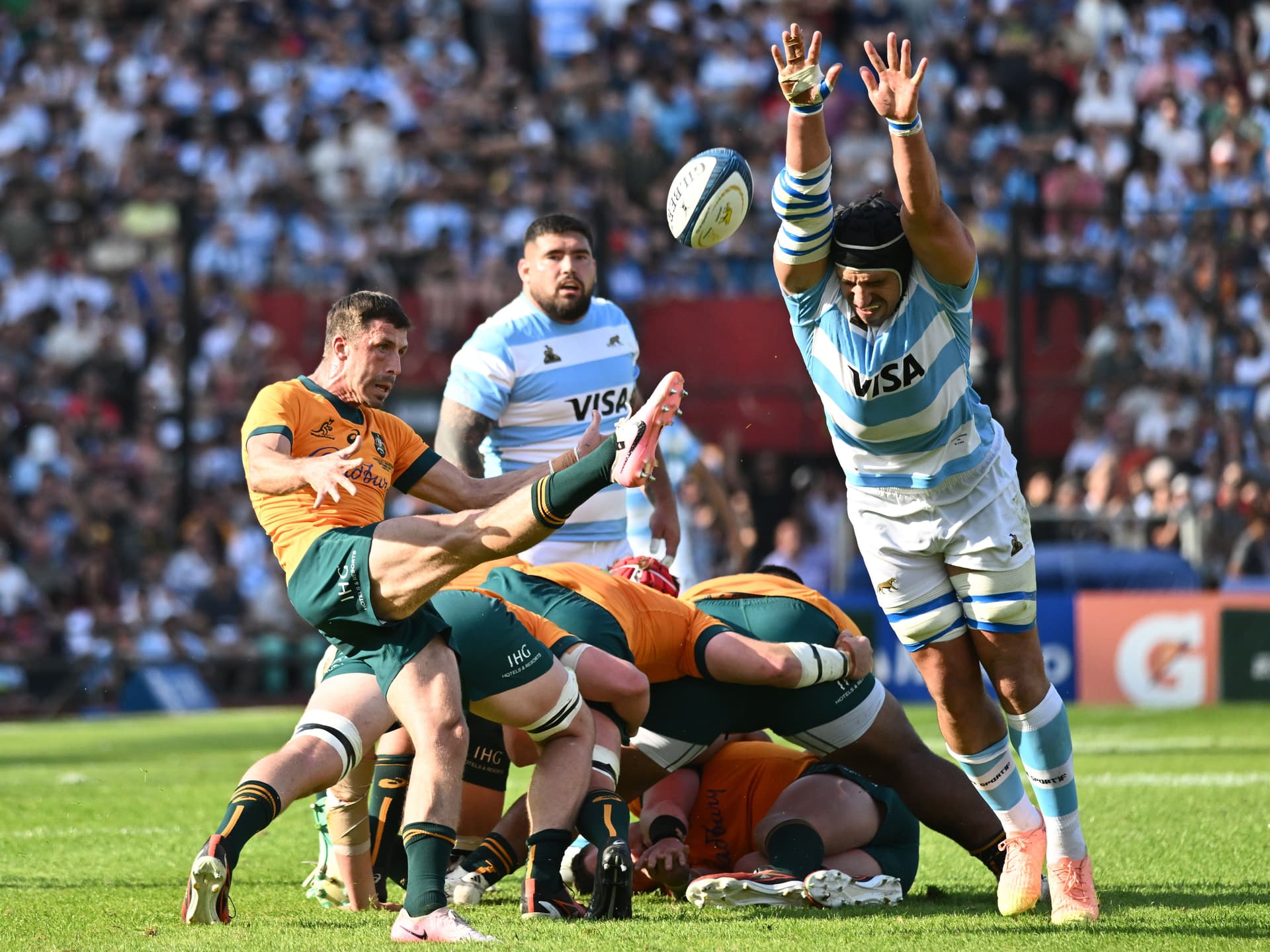Rugby
What is the Offside Rule in Rugby?
Rugby Union is full of rules and subjective laws. Unlike Association Football, the offside rule is uncomplicated. What is the offside rule in rugby? Find out here!

Image Credits: Rodger Bosch / AFP
Unlike association football, the offside rule in rugby union is easy to understand. In rugby, there is an imaginary offside line that determines whether defending (or attacking players) are infringing by way of their position on the field. Offside ‘lines’ exist at every set piece (scrum, ruck, lineout, maul, restart, and 22 drop-outs). SportsBoom looked through the law book to determine what offside is in rugby union.
Law 10: Definition of Offside in Rugby Union
World Rugby (WR), the governing body for international rugby union, asserts that the principle of the offside is that “the game is played only by players who are onside.” World Rugby notes that a player “is in an offside position if that player is further forward (nearer to the opponents’ goal-line) than the team-mate who is carrying the ball or the team-mate who last played the ball.”
Offside restricts where on the field players can be, to ensure there is space to attack and defend. Law 10.1: Offside and onside in open play – “A player is offside in open play if that player is in front of a team-mate who is carrying the ball or who last played it. An offside player must not interfere with play.”
This includes “playing the ball, tackling the ball carrier, preventing the opposition from playing, and loitering in an offside position.” Moreover, a player can be offside anywhere in the playing area. Law 10.4(a) states that a player can be penalised if that player does not retreat from an offside position and interferes with play.

Image Credits: Daniel Jayo/Getty Images
WR adds, in Law 10.4(b), that a player is offside if they move towards the ball from a position of offside. Law 10.4(c) further notes that if a player “was in front of a team-mate who kicked the ball and fails to retire immediately behind an onside team-mate or an imaginary line across the field 10 metres on that player’s side from where the ball is caught or lands, even if it hits a goal post or crossbar first.”
The governing body adds, “if this involves more than one player, then the player closest to where the ball lands or is caught is the one penalised. This is known as the 10-metre law and still applies if the ball touches or is played by an opponent but not when the kick is charged down.”
Law 10.5: Accidental Offside
Law 10.5: Accidental offside states that “A player is accidentally offside if the player cannot avoid being touched by the ball or by a team-mate who is carrying the ball. Only if the offending team gains an advantage should play stop.” Law 10.6(a & b) notes that a player/s can be put back onside if the player/s “move behind a team-mate who last played the ball; or the player/s move behind a team-mate who is onside.”
Law 10.9 – 11: Offsides from Rucks, Mauls, Scrums, or Lineouts
Law 10.9 states that players are offside at all set pieces (scrums, lineouts, rucks, and mauls) if the offside player who is offside at any of these set pieces “remains offside, even after the ruck, maul, scrum or lineout has ended.” The referee will designate where the imaginary offside line is at the set piece because these offside lines differ.
Furthermore, Law 10(a-c) asserts that a player, or players, can only be put back onside if they immediately get back behind the designated offside line, or if the opposition attackers carry the ball five metres in any direction. Lastly, a player, or players, can be put back onside if the opposition kicks the ball away. According to Law 11(a – c), any offsides players will be penalised should they “fail to retire without undue delay and benefits from being put onside in a more advantageous position; or interfere with play; or move towards the ball.”
Law 15.4 declares that “each team has an offside line that runs parallel to the goal line through the hindmost point of any ruck participant. If that point is on or behind the goal line, the offside line for that team is the goal line.” Law 16.4 “each team has an offside line that runs parallel to the goal line through the maul participants’ hindmost foot that is nearest to that team’s goal line. If that foot is on or behind the goal line, the offside line for that team is the goal line.”

Image Credits: Luciano Bisbal/Getty Images
Law 16.5, further states that a “player must either join a maul from an onside position or retire behind their offside line immediately.” Law 16.6 says “Players who leave a maul must immediately retire behind the offside line. These players may re-join the maul.” The referee will award penalties to the opposition for any of these infringements.
World Rugby explains that the purpose of scrums is to restart play with a contest for possession after a minor infringement or stoppage. There are multiple reasons a scrum takes place. Some of the most common is from a free-kick, knock-on, forward pass, offside, taking the ball in-goal by the defending team, an unplayable ball at the ruck, an unsuccessful maul, or stoppage because of an injury.
Law 18.30 asserts that “all lineout players are onside if they remain on their side of the mark of touch until the ball has been thrown in and touched a player or the ground.” Law 19.27 requires players to remain “onside for the duration of the scrum.”
Law 19.28(a & b) goes further, saying that before the scrum is set, the defending team’s scrum-half must stand “on that team’s side of the middle line next to the opposing scrum-half, or at least five metres behind the hindmost foot of their team’s last player in the scrum and remains there until the completion of the scrum.”

Kaylan Geekie is a sports fanatic. He attended Durban High School before moving to Scotland, where he lived for 15 years. During his time in the United Kingdom, Kaylan graduated with a first-class BA Honours Degree in Sports Journalism at the University of the West of Scotland. Kaylan worked for nine years as the Match-Day Editor of SuperXV.com, reporting on Super Rugby, The Rugby Championship, the 2015 Men's Rugby World Cup and the 2017 British & Irish Lions series for the website.